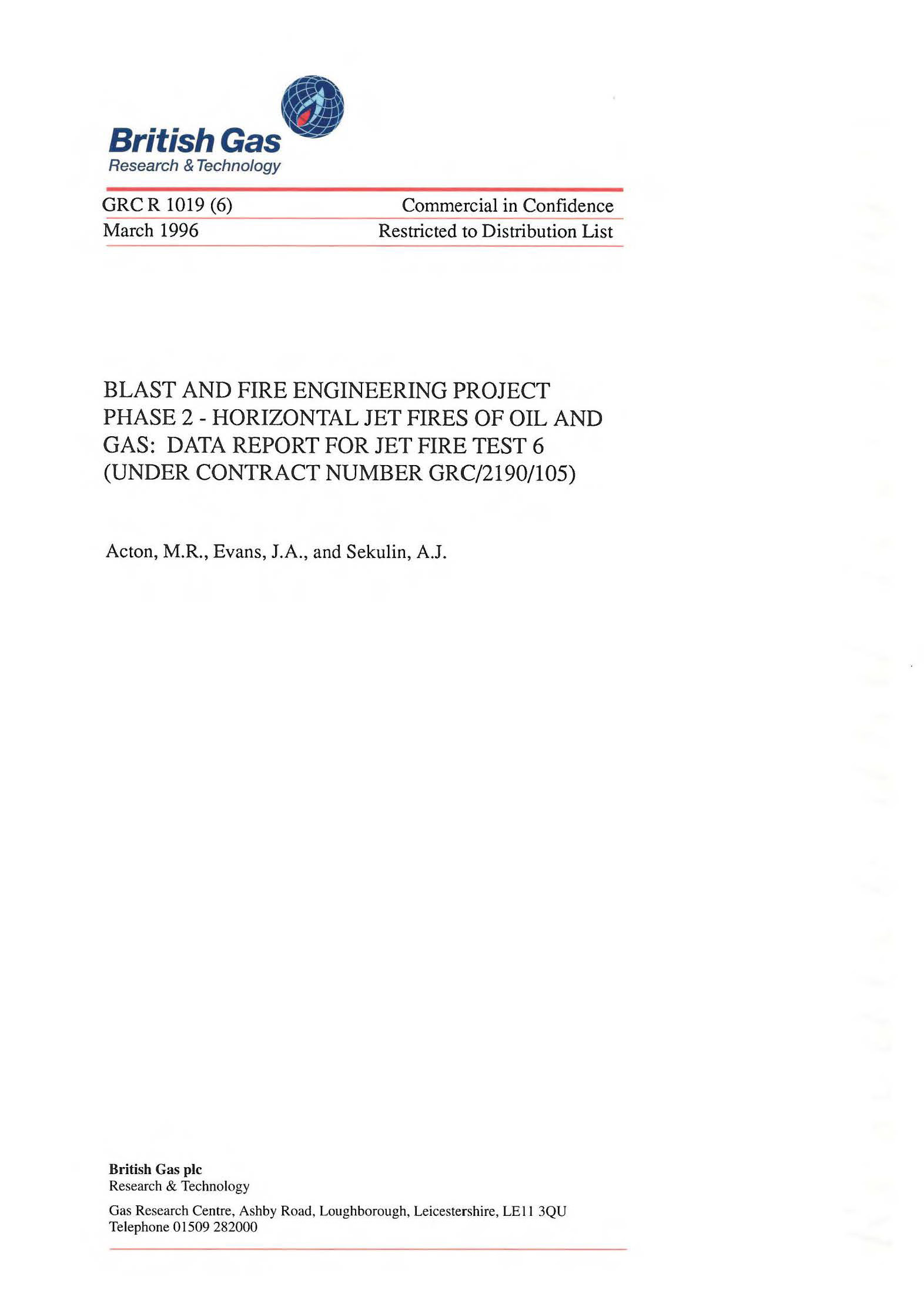British Gas GRC R 1019 (6)
Horizontal Jet Fires of Oil and Gas - Data Report for Jet Fire Test 6
BFETS Phase 2

FABIG Members: Log-in to access all FABIG resources LOG IN
SUMMARY
A programme of jet fire tests was undertaken by British Gas over a two-month period, between May and June 1995, under contract to the Steel Construction Institute as part of the industry sponsored ‘Blast and Fire Engineering Project for Topside Structures’. An overview report has been prepared which describes the measurement techniques and equipment used. The overview report also contains a summary of the data from each of the tests. In addition, an individual data report has been prepared for each test. This data report contains the detailed results of measurements taken during Test 6.
Test 6 was specified to be a free flame experiment, fuelled by a mixture of 2 kg/s natural gas and 3 kg/s crude oil (i.e. a gas:oil mass ratio of 2:3, or 0.67), released horizontally from circular holes at the ends of parallel, adjacent pipelines at absolute stagnation and static pressures respectively of 7 bar. Preferred weather conditions were dry, with a nominally co-flowing wind (i.e. blowing from behind the release, within 30° either side) and a horizontal wind speed in the range 3 to 8m/s.
The conditions during Test 6 were within the preferred conditions specified. The release hole diameters required to achieve the pressures and flow rates specified were identified prior to the test, and were 48.0 mm for the natural gas and 14.0 mm for the crude oil. The natural gas flow rate achieved in the test was 2.0 kg/s, released at an absolute stagnation pressure of 7.1 bar. The crude oil flow rate achieved in the test was 3.0 kg/s, released at an absolute static pressure of 7.2 bar. The gas:oil mass ratio was therefore 0.66 and the gas:oil volume ratio (GOR) was 771 (m3 of gas to m3 of oil at NTP, 15°C and 1.013 bar). Weather conditions were dry, with a time-averaged wind speed (measured 41 m nominally cross-stream of the crude oil release axis, at a height of 6.9 m above the crude oil release point) of 6.7 m/s, from a time-averaged direction 14° off the crude oil release axis.
In the test, natural gas was released first, then ignited, before the crude oil was released. The mixture of natural gas and crude oil produced a stable flame, which extended approximately 29 m in a horizontal direction and generated significant quantities of smoke. There was negligible liquid drop-out to the ground. The flame was luminous and highly radiative, with a time-averaged maximum flame surface emissive power of 360 kW/m2.
Online purchase options:
Non-Members of FABIG are able to purchase PDF copies of the reports.